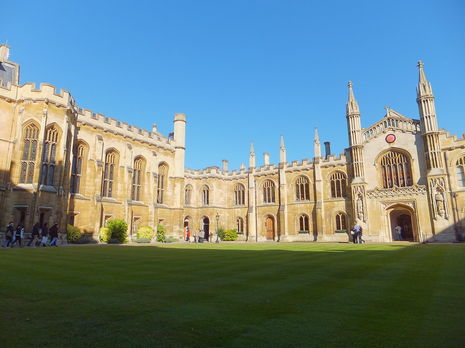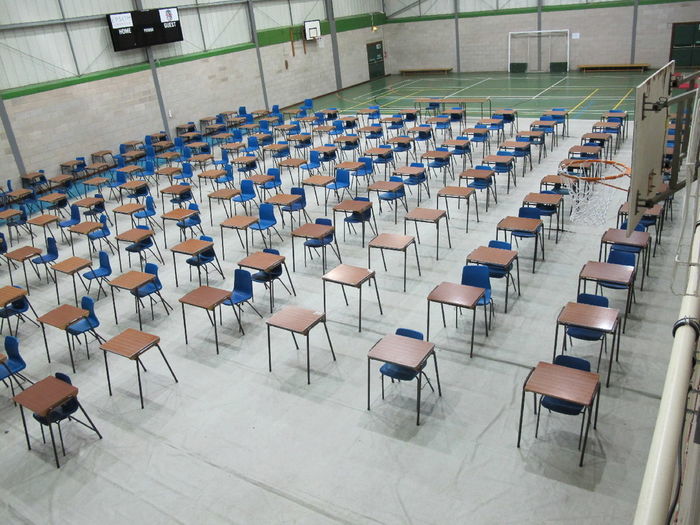The divide between state and private is narrowing – but we still have further to go
After Bristol University’s Students’ Union rejected a motion to cap private school admissions to the university at 7%, Eve Carcas argues that we still have much further to go to achieve fairer representation of state school students at prestigious institutions.

The number of state school students at prestigious universities is growing. We are seeing ever-increasing efforts towards proportional admissions, and the focus on levelling class divides at universities like Cambridge has never been more of a priority. So, why are many state school students unsatisfied by this progress?
As someone who went to a non-selective, state-funded school, the pride I experience seeing statistics of rising proportions of students like me is often short-lived, as positive steps are immediately offset by countless statements of disapproval. The current conversation around educational equality ignores a key truth: that to increase the number of state school students at top universities, the number of private school admissions has to decrease.
“Although the drive to enhance opportunities for state-school students may be strong, the desire to protect the interests of paid education providers and consumers is stronger.”
This appears obvious, and yet is seldom discussed. The dimensions of what we mean by ‘access’ are rarely defined, as is evident when it comes to definitive action for access improvement. A recent meeting of Bristol University’s Students’ Union rejected a motion that the SU lobby to cap private school admissions at 7% - the percentage of UK students who attend private schools.
Many who opposed the motion described it as ‘inclusion by exclusion’, reaffirming that although the drive to enhance opportunities for state-school students may be strong, the desire to protect the interests of paid education providers and consumers is stronger.
The issue lies with the fact that this societal sacrifice - essentially stripping private schools of some of their key benefits - is viewed as a personal one. Of course, it is unjust to deny admission to talented and hard-working private school students. However, year upon year, state school students are disproportionately turned away from prestigious higher education despite their capabilities, intelligence and potential.
This is not to say private school students should ‘suffer’. The process of applying to university is stressful enough, and the feelings ensuing from any rejection, regardless of class, are equally valid. But we must highlight that the terrible fate of not receiving well-earned, door-opening university offers is already a reality for far more state school students.
No individual is wrong for entering private education if they have the means: the benefits are clear, and many students don’t have a choice. However, when these benefits equate to paying for increased chances of admission to a top university, it becomes clear the doors opened by private education are the main attraction, rather than an escape from the deficiency of state schools, as is often argued. Importantly, opposing a system that prioritises paying pupils over others whilst simultaneously making the best of that system is entirely possible; the two are not mutually exclusive.
Bristol’s motion considered many nuances of the private-state divide, taking into account the private school students receiving bursaries or scholarships, as well as the fluctuating levels of students attending such institutions. It was, however, overwhelmingly rejected, with nearly 70% of voters against the movement. To put this into context, 71.3% of Bristol University students in 2021 attended state schools - just above Cambridge University’s figure of 70%.
“State education does not equate to deprivation. There is also far more to be done in terms of representing disabled and BAME students.”
It is the conversation itself that needs work. The proposer of Bristol SU’s motion, James Fishwick, told me how one of his key motivations was, “Starting a conversation and seeing where it goes.” By focusing simply on state versus private education statistics, we overlook the specificities of socioeconomic status.
State education does not equate to deprivation. There is also far more to be done in terms of representing disabled and BAME students, with huge scope to understand the intersection between SES and lack of privilege in other areas of identity.
Change is happening and admissions are improving, but this is not enough. There is still a clear divide between state and private school students that isn’t solved simply by UCAS updates. It begins at infancy, pushing right through to career opportunities; the social and cultural capital disproportionately held by those who attend private schools is not solved by simply adjusting admissions. There is a distinct lack of provision in many state schools that goes beyond passing A-levels, whether it’s providing interview skills and assistance in specialized application processes for Oxbridge, scope for extracurriculars to broaden experience, or acknowledging that higher education is a realistic option.
This conversation is far from over. Despite the rejection of Bristol’s motion, Fishwick feels he has ‘achieved creating a greater dialogue about how to deal with the inequalities - not just state versus private, but getting into the power and privilege that private education affords.’ Though this dialogue may sometimes feel never-ending here at Cambridge, its dimensions must shift for progress to be made.
Improvements in admissions statistics testify that state school students deserve their places. Changes in representation will not be immediate, and substantial time will likely pass before proportions approach those of the national percentages - if they do so at all. But we need to shift the way we discuss the divide between state and private school admissions. In practice, willingness to improve access conflicts with reluctance to reduce places for private schools. Until this is worked through, alongside more nuanced operationalization of SES measures, progress functions in numbers only.
 News / Cambridge Chancellor hopeful accuses opponent of electoral malpractice 9 July 2025
News / Cambridge Chancellor hopeful accuses opponent of electoral malpractice 9 July 2025 Interviews / ‘Disagreeing agreeably’: meet the three Caians chairing CUCA, CULA and CULC 9 July 2025
Interviews / ‘Disagreeing agreeably’: meet the three Caians chairing CUCA, CULA and CULC 9 July 2025 Lifestyle / Reflections on rowing10 July 2025
Lifestyle / Reflections on rowing10 July 2025 News / Meta opens £12 million lab in Cambridge 11 July 2025
News / Meta opens £12 million lab in Cambridge 11 July 2025 Theatre / What even is a welfare officer?9 July 2025
Theatre / What even is a welfare officer?9 July 2025









